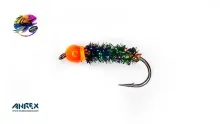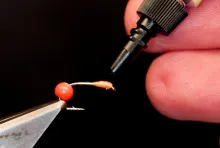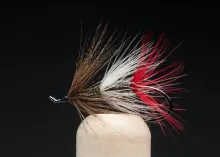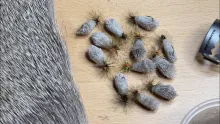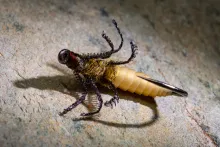Ian Moutter, author of Tying Flies in the Paraloop Way, returns with his second book: Imitative Fly Tying.
Updated or edited 10 months ago
Ian Moutter, author of Tying Flies in the Paraloop Way, returns with his second book: Imitative Fly Tying. Whereas his previous book was an exploration of fly tying techniques, this book is oriented toward those who want to apply those techniques to different fly patterns. As the name would suggest, the intent is to create patterns that are imitative in nature - that is mimicking natural food forms that a fish is feeding on. In this case, the fish are cold water species - namely trout or grayling.
The book is split into six chapter - four dealing with different stages of an insect's life cycle, one tackling the subject of smaller stream and creek fishing, and one offering the author's thoughts on fly tying vises. In addition to these chapters, the back of the book contains appendices containing more details on the materials and techniques used to tie the flies presented in the previous chapters.
The four life cycle chapters are, in order, emergers, adult upwings, spent spinners, and immature flies such as nymphs, larvae, and pupae. Each of these chapters is split into two parts, the first being a short discussion of the chapter's topic, the second a tutorial on different tying techniques and fly patterns used to imitate these different insect stages.
The book is printed on heavy stock paper and is filled with crisp and clear color photographs. I found the step-by-step instruction sequences quite excellent, as well as the "posed" photos of the finished flies. In fact, the photos are so complete that the text below each tying step is almost superfluous (although I would not suggest its omission).
The flies themselves tend toward simplicity - many relying on his well known Paraloop techniques. The intent is not eyes-end-elbows realism, but rather a more impressionistic imitation. He wants to offer the fish an idea of the real food item - in both form and behavior. Much effort has been placed in designing the flies such that they ride in the proper part of the water column. An emerger should drift well stuck in the surface film, for example, rather than high on a set of prickly hackle points.
I will admit to being a bit surprised to see a whole chapter devoted to fly tying vises in a book that is supposed to be about applying fly tying technique to specific fishing situations. Being just a few pages long, this might better have been included with the other appendices.
While Moutter's discussion of hatches and insects is obviously UK-centric, anglers anywhere should be able to adapt his ideas to their own circumstance. While I did not happen upon many forehead slapping revelations, I did find plenty of useful tidbits that I plan to fool around with when the hatches start up again in the Spring. The chapter on emergers, in particular, was quite interesting - especially the advice on the placement of the various floating components of the fly and how they affect the orientation of the fly when it is fished. Thank you, Mr. Moutter, for another fine addition to my fly tying library.
- Log in to post comments

